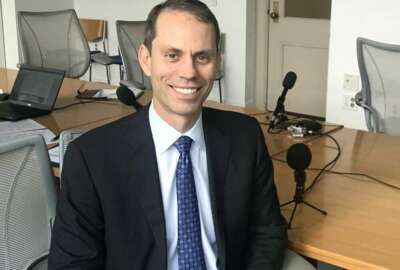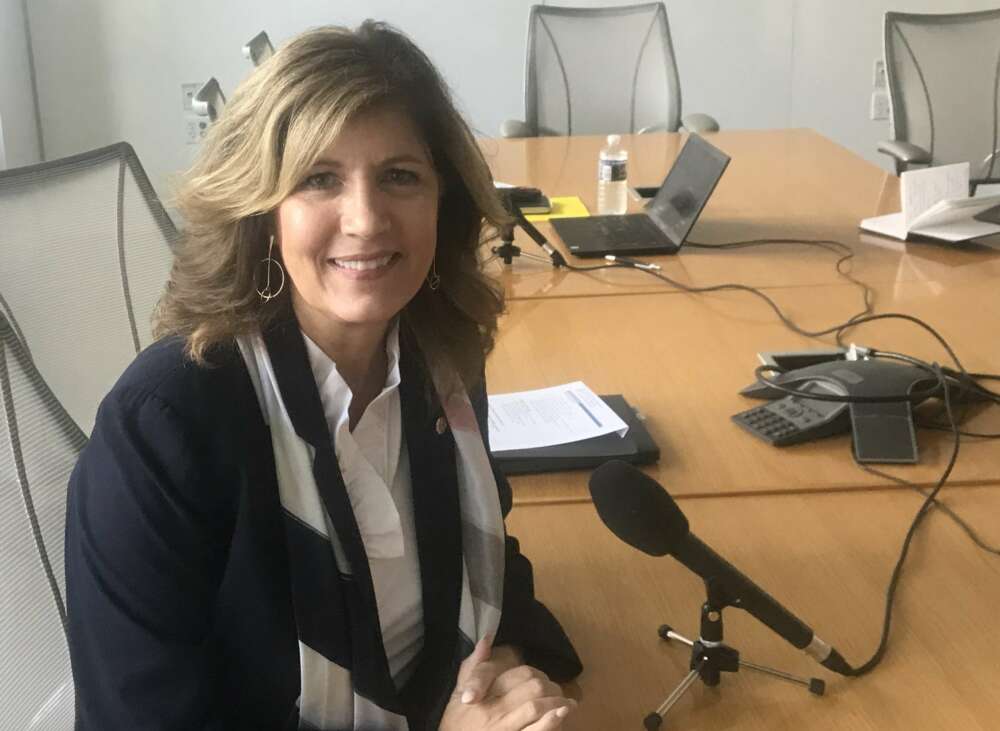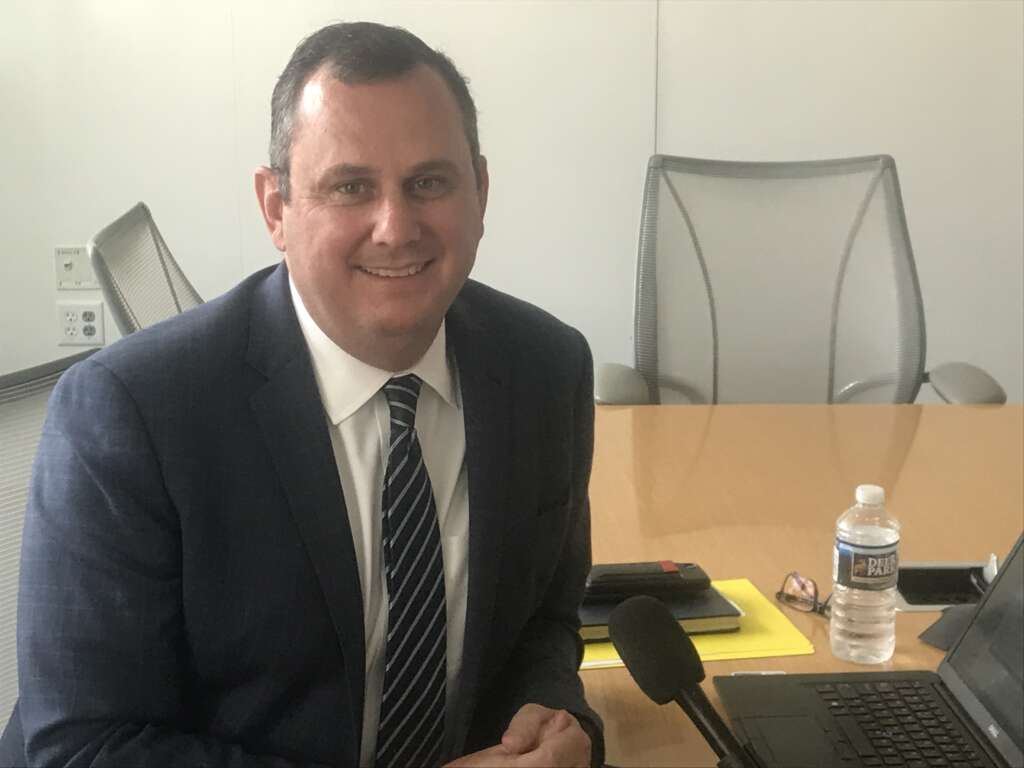

Advances in data analytics have given PBS better insight into its real property portfolio and has helped the agency maximize the efficiency of its buildings.
Best listening experience is on Chrome, Firefox or Safari. Subscribe to Federal Drive’s daily audio interviews on Apple Podcasts or PodcastOne.
For the past 70 years, the General Services Administration and its Public Buildings Service have served as the government’s landlord, making sure thousands of federal buildings stay in good working order and that tenant agencies have the resources they need to meet their mission.
While the mission of PBS hasn’t changed over the decades, advances in technology and data analytics have given the agency better insight into its real property portfolio, and have helped the agency maximize the efficiency of its buildings.
As part of Federal News Network’s special report, GSA @ 70: Mission Evolved, acting PBS Deputy Commissioner Allison Azevedo, a career employee with more than 30 years of experience at the agency, told Federal News Network’s Jory Heckman what’s changed during her time there.
Meanwhile, Giancarlo Brizzi, the regional commissioner for PBS in the greater Southwest region, compared his career at PBS to his experience working alongside agencies in the private sector.
Here are some edited highlights of that conversation:

Jory Heckman: How has the Public Building Service evolved from when you first started working at the agency to now?
Allison Azevedo: I came to GSA right out of college. It was in 1988 and I actually started out in Chicago because I majored in design and at the time, GSA was offering a really competitive salary compared to design firms. And I thought, “Well this gets me to Chicago, and it seems like it’s going to be a really good job, at least for a couple of years.” But like a lot of us that have been here for over 30 years, it ended up being a really great opportunity and a really great career to learn all the facets of the real estate business.
Giancarlo Brizzi: I didn’t grow up in the Public Buildings Service or even in GSA. Coming out of college, I went into management consulting where I worked for 10 years, supporting various government agencies and then was recruited to work at the Treasury Department.
I’ve always had a unique passion for space and buildings. My father’s an architect, and so he instilled this passion in me. All of our family vacations were centered around visiting buildings, Frank Lloyd Wright locations, and so that just naturally appealed to me.
JH: How have changes in technology impacted your day-to-day job?

AA: There’s been a dramatic shift, and I think technology has made everything a little bit more sophisticated, and we can do a lot more management of real estate through leveraging technology as well as vendor partners. So I believe that having computers that run buildings, computers that generate drawings and putting that technology together and learning from industry best practices, we’re really able to better fulfill our mission by delivering top-quality services to federal agencies.
GB: One of the things that’s impressed me coming into the agency was how good of an IT shop that we have. We have a wonderful [Chief Information Officer] David Shive, and an amazing organization supporting us from a technology perspective.
One of the things I didn’t realize is how much within the Public Buildings Service we rely on technology. And one example of that was the building automated systems and how much we rely on them to provide a comfortable climate for visitors or tenants in the agency. But it also makes us operate those systems — whether it’s heating, ventilation, air conditioning or utilities such as lighting — a more efficient manner.
JH: How have you seen the PBS workforce change during your career?
AA: I believe it has [changed] and the way that we realized that is we really need subject-matter expertise in-house. While we aren’t doing the work, we need those experts that can interpret those codes and regulations that we have to comply with in keeping our buildings safe and secure, whether it’s a seismic condition [or] whether it’s materials that need to be removed in our aging infrastructure.
GB: It is incredibly impressive the type of issues that our employees have to deal with, that they have to know intimately the building systems and the technology and work with a multifaceted team.
And it’s not just a normal work week, 40 hours a week. These buildings never sleep. Many of the operations that we support in the region are 24/7 and what amazes me is on the weekend, whether it’s a hurricane that’s coming in, or there’s an issue on the weekend because an HVAC system went out, they’re always there and responsive to the needs of a customer.
JH: What do you see as the central mission of PBS? And how has it evolved in the time that you’ve been here?
AA: It’s been an interesting vantage point, being in headquarters now versus working out of a regional office.
I was in a regional office, taking direction from headquarters for 27 years of my career. Now being in headquarters, hearing what the mission and direction of the administration are has been a really interesting perspective. And I think being able to take that vision and turn it into something that’s operational at the regional level has been a really great opportunity for me personally, because I know how the work gets done.


So the pendulum has really shifted, and what I’m excited about now is it really is on both the mission and the money, creating work environments where agencies can best perform their mission, as well as let’s focus on what’s most important and beneficial to the taxpayer.
GB: Our mission is very much about meeting the space needs of our customers at minimal cost to the taxpayer. That’s at the core of what we do, but I would even expand it further. Our mission is the mission of the agency that we’re supporting, and that’s really unique to PBS.
From an evolutionary standpoint, one of the things that I saw when I was at the Treasury Department was PBS [going] from more of an order-taker, as Allison was describing, to now more of a consultative role, where it’s a partnership.
Sometimes we have to talk about, “Hey, look, we want to reduce your space, and this is the value of doing so. At the end of the day, it’s more mission for the dollar, and so the more you’re spending on space, the less you get to spend on mission.” And so again, it’s more of a consultative client partnership, as opposed to just an order-taking one.
Copyright © 2025 Federal News Network. All rights reserved. This website is not intended for users located within the European Economic Area.
Jory Heckman is a reporter at Federal News Network covering U.S. Postal Service, IRS, big data and technology issues.
Follow @jheckmanWFED
